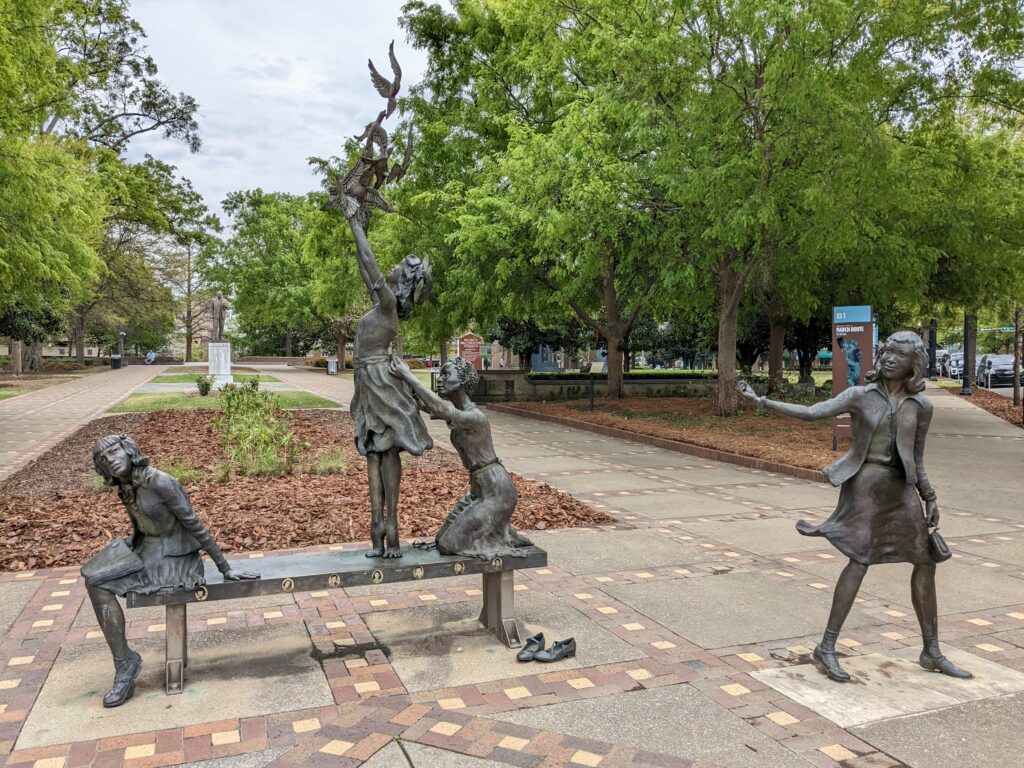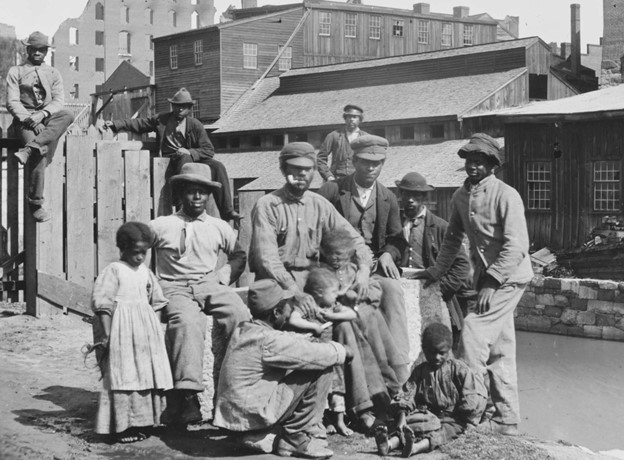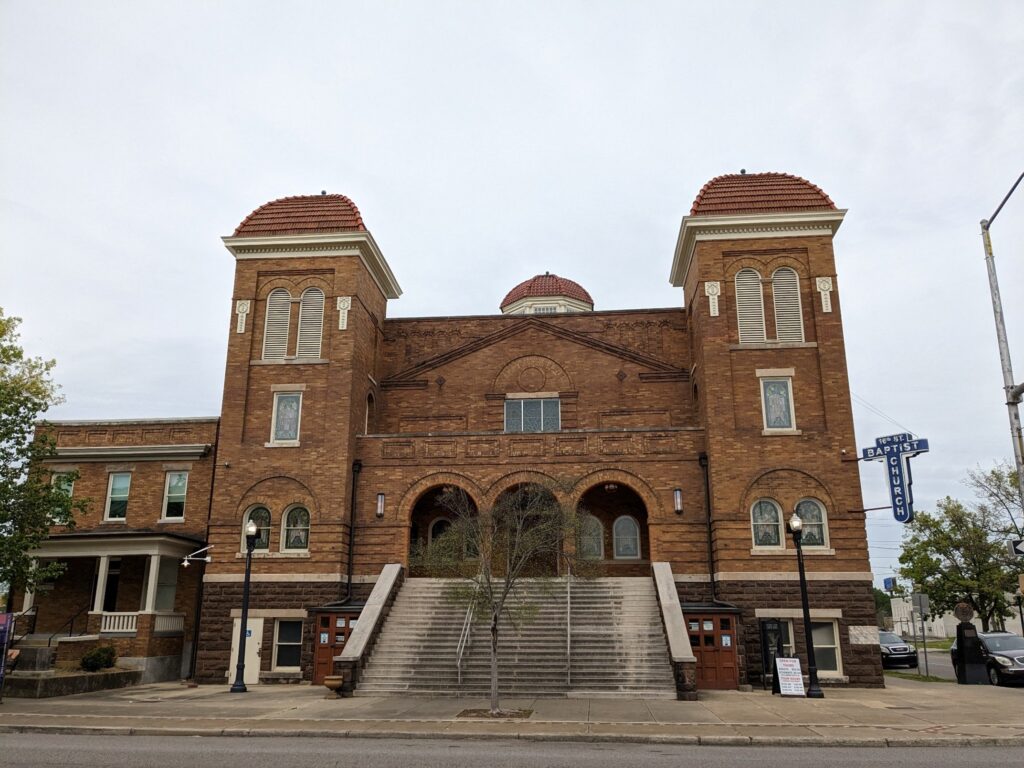Never Forget – Part 1

Content warning: massacre, white supremacy, racism, gun violence, anti-Blackness, terrorism
Photo (taken by Laura): Four Spirits sculpture by Elizabeth MacQueen depicting the four girls that died in the 16th Street Church bombing in Birmingham, 1963: Addie Mae Collins, Denise McNair, Carolyn Robertson and Cynthia Wesley. Two boys, Virgil Ware and Johnny Robinson, were also murdered in separate events that day.
Never Forget
It’s been a year since 10 people were killed in Buffalo, NY. Massacres of Black people have happened throughout history and continue to happen. A year ago Clark’s Vice President of Diversity, Equity, & Inclusion called on the college community to reflect on the Buffalo massacre in the context of a long history of anti-Black violence. In her message to the college, the VP of DEI shared a list of massacres, urging us to research this history. Both the topic and the process can be overwhelming, so below is some information to help you get started. Next week, Part 2 will share resources highlighting activism, empowerment, resilience, and joy, which we should never forget are part of the history too.
Massacres to research and reflect on:
- New York 1963 – The Bloodiest Race Riot in US History, an online video
- Memphis 1866 – A Riot and Massacre, a chapter from the ebook Terror in the Heart of Freedom: Citizenship, Sexual Violence, and the Meaning of Race in the Postemancipation South by Hannah Rosen
- New Orleans 1886 – An article from The Times-Picayune, 1866 New Orleans massacre remembered as a city-led racial attack a year after the Civil War ended
- Opelousas 1868 – The Deadliest Massacre in Reconstruction-Era Louisiana Happened 150 Years Ago, an article from Smithsonian Magazine
- St. Bernard Parrish 1868 – The 1868 St. Bernard Parish Massacre: Blood in the Cane Fields, a book you can request from our partner libraries (Summit)
- Camilla 1868 – “The Camilla Massacre of 1868: Racial Violence as Political Propaganda”, a chapter in the book Black Freedom/White Violence, 1865-1900

- Colfax 1873 – The book The Day Freedom Died: The Colfax Massacre, the Supreme Court, and the Betrayal of Reconstruction
- Eufaula 1874 – An article from The Alabama Historical Quarterly, Reconstruction Politics and the Military: The Eufaula Riot of 1874
- Vicksburg 1874 – Primary sources from Documenting American Violence: A Sourcebook, pages 180-183
- Clinton 1875 – The Mississippi Riots, a New York Times article from September 8, 1875
- Wilmington 1898 – The new book Wilmington’s Lie: The Murderous Coup of 1898 and the Rise of White Supremacy and the ebook Democracy Betrayed: The Wilmington Race Riot of 1898 and its Legacy
- East St. Louis 1917 – Bloody Island, an online video
- Tulsa 1921 – Unspeakable: The Tulsa Race Massacre, a book for young readers written by Carole Boston Weatherford and illustrated by Floyd Cooper
- Detroit 1943 – “They Think Their Fannies Are as Good as Ours”: The 1943 Detroit Riot, a scholarly essay by Jeffery Shantz
- Birmingham 1963 – 4 Little Girls, a documentary by Spike Lee about the bombing of the16th St. Baptist Church, pictured below
- Orangeburg 1968 – Scarred Justice: The Orangeburg Massacre 1968, an online video
- Philadelphia 1985 – The Day Police Bombed a City Street, a newspaper article from The Guardian
- Charleston 2015 – For Such a Time as This: Hope and Forgiveness after the Charleston Massacre by Sharon Risher, who lost her mother and two cousins
- Buffalo 2022 – An article from Afro-Americans in New York Life and History, White Terrorism in Black Buffalo by Norm R. Allen Jr. and 1 Year Later: Buffalo Honors the Tops Supermarket Shooting Victims by Jaclyn Diaz



